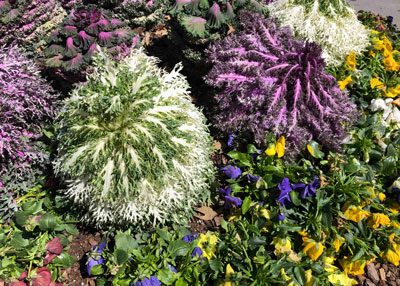Assessing the Impact
Cold just a few days ago hit temperatures 20 and 25 degrees below the average lows for the dates. How much damage did it do? It’s too early to tell, but things will begin to unfold pretty quickly. Let me jot down a few observations based on having driven only a few dozen miles and having seen only a few thousand plants but also in having experienced similar things for the past 50 springs.
• This will set back spring by a couple of weeks. Plants that were geared up to grow will have to rev it all up again. If leaf buds were browned, they’ll be shed and new buds will have to be produced to replace them. But that will happen.
• Fruit trees that were in bloom at the time of sub-freezing temperatures may be out of business for 2019. But, worse things have happened. We – and they – will survive to have fruit another year.
• Any early vegetables you lost may need to be assessed. It’s too late to be replanting English snap peas and onions in the southern two-thirds of Texas. It’s questionable as to whether you should replant Irish potatoes near or south of I-20 this late. Summer’s hot weather rolls in too soon. But it’s prime time to plant leafy and other root crops, so use your time to get that accomplished.

Oleander leaves that were impacted by the cold didn’t wait long to tell us!
• Tiny new shoots of shrubs that might have been nipped and browned by the cold can be buzzed off with hedge trimmers, or as Option 2, new growth will quickly overtake them in 4-6 weeks if you can stand to look at them for that long. You may also see pockmarks on the leaf surfaces of waxleaf ligustrums due to the cold, but don’t worry about those – the old leaves will soon be shed anyway. This may also hasten the shedding of last year’s live oak leaves in North Texas. It was about to happen anyway. It was already underway in big parts of South Texas. It’s absolutely normal. Don’t be concerned. It has nothing to do with the cold.

This crape myrtle was wounded, not killed back entirely by the winter of 2014-2015. Be watching for this sort of behavior. It it appears, be prepared to trim you plant back to the ground so you can retrain the regrowth.
• Some crape myrtles may have been hurt by the cold. As much as I work with crape myrtles, I honestly don’t know this soon if there is damage, and we probably won’t know for several more weeks. If you see dieback, be prepared to prune damaged trunks back as far as you need to, even down to the ground, and then to train the new shoots into tree form as this and next year unfold. It’s actually a good way to repurpose a crape myrtle that has been topped in the past.

Ornamental kale and pansies in theory will bounce back, however, pansies may be stunted and kale is bolting into flower, so its season is done. It’s time to replace these plants in this planting.
• Pansies should bounce back, but their recovery this late in their season will probably depend on how far north you are and how cold it got. They may not have time to make a full recovery, so if they don’t look great within the next two weeks, consider making the inevitable change-out to summer annuals. Ornamental cabbage and kale were already starting to bolt to flower. That ruins their form and pretty well spells the end of their season, so take this chance to replace them. Snaps will probably bounce back and pinks certainly will. Other cool-season plantings can resume with full expectation of success.
• St. Augustine lawns should be fine unless they were planted within the past 3-4 months. The cold we experienced last Sunday and through the first half of this week is precisely why we recommend against rushing the planting season when it comes to St. Augustine sod anywhere except along the Texas Gulf Coast. Cities that require that sod be planted around new homes before certificates of occupancy will be granted are doing their citizens and the cities themselves a great disservice by requiring sod be in place before the COA will be given – even in winter and even in shaded landscapes. There ought to be a variance given allowing planting once the weather warms, with a stiff penalty for those who violate the promise.
• Perennials like lantantas and mallows that are notoriously late to emerge following the winter are going to be even later this year due to weeks of cold soil. But not to worry unnecessarily. They should still be just fine.
• And, just to answer it here, too: Application dates for pre-emergent herbicides by consumers can be pushed back by 7-10 days due to the cold. Soils have been so cold that grassbur and crabgrass seeds have not been tempted to sprout. So wherever you are, you can move the critical date back by a week before you apply your Dimension, Halts or Balan granules.
